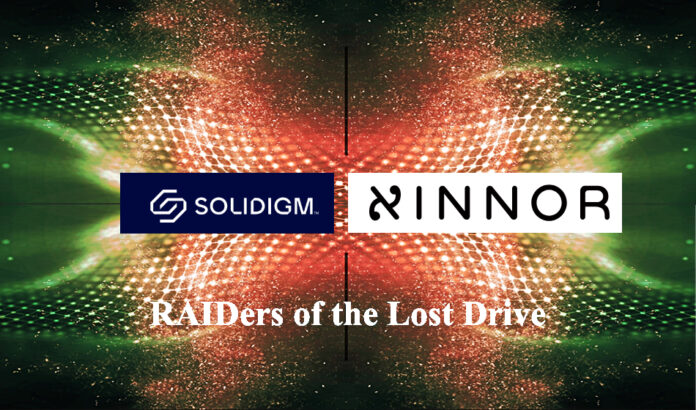Software RAID supplier Xinnor claims it can rebuild a 61.44 TB SSD in a little more than five hours, around 10x faster than traditional Linux RAID rebuild software.
Xinnor’s xiRAID product distributes data across a cluster of drives. There are spare zones on each drive and data from a failed drive is restored to these zones, thereby reducing overall rebuild time. Solidigm is an SK hynix subsidiary and supplies high-capacity SSDs, such as its D5-P5336 61.44 TB product built with QLC (4bits/cell) flash. A study produced by Xinnor and Solidigm, titled “Accelerating RAID Rebuild and Reducing Write Amplification on High Density Solidigm QLC Drives with xiRAID,” shows that xiRAID can rebuild a failed drive in 5 hours, 22 minutes without any host workload, compared to 53 hours, 40 minutes with mdraid (Linux software RAID).

Xinnor CRO Davide Villa said: “Our collaboration with Solidigm proves that high-density QLC drives paired with optimized software RAID can deliver both the capacity, performance, and reliability organizations need, eradicating the challenge of operating for a prolonged period of time in degraded mode due to extensive rebuild time.”
The Xinnor Solidigm study relied on Dell PowerEdge R760 systems with Intel Xeon Gold 6430 processors and 10 Solidigm D5-P5336 61.44 TB drives in RAID 5 configurations. The research measured both rebuild performance and write amplification under various conditions.
The xiRAID software maintained 316 MBps rebuild speed under active workload versus 10.5 MBps with mdraid, while achieving a 1.02 write amplification factor (WAF) during rebuild versus 1.2 with mdraid. The WAF refers to the extra NAND media write operations which the SSD controller performs in response to the host writes (WAF = total NAND media writes / total host issued writes) due to the SSD’s block organization. A lower WAF prolongs an SSD’s working life (endurance).
When rebuilding with an ongoing host workload, the Solidigm 61.44 TB SSD rebuild using xiRAID is approximately 30x faster with 23 percent lower WAF than using the Linux mdraid software. According to the Xinnor blog: “Without the raw performance capability of Solidigm D5-P5336 QLC SSDs, rebuilds could take a long time – months in some cases – and/or host IO would not be serviced properly.”
Xinnor said xiRAID delivered 44 GBps read and 13 GBps write performance during rebuild operations. The study noted that, “while mdraid would require over 67 days to rebuild a 61.44 TB drive under host workload, xiRAID completes the same operation in approximately 54 hours while maintaining robust host application performance.”








